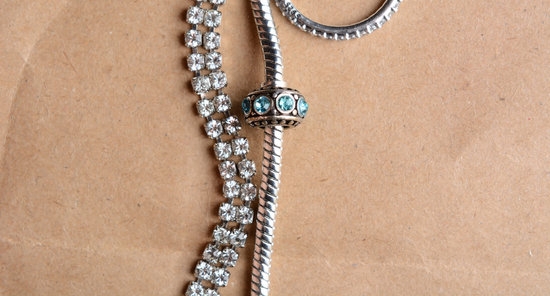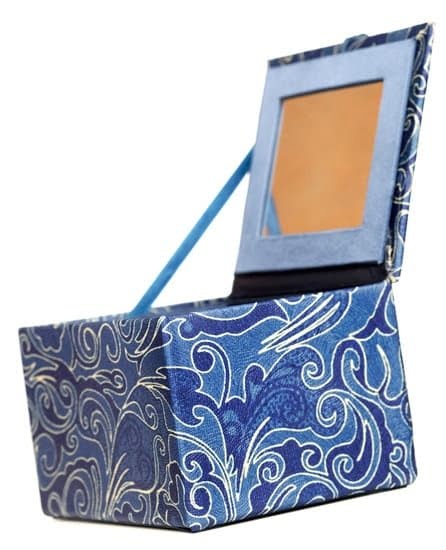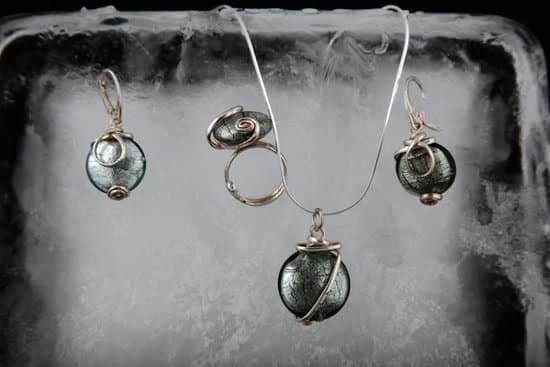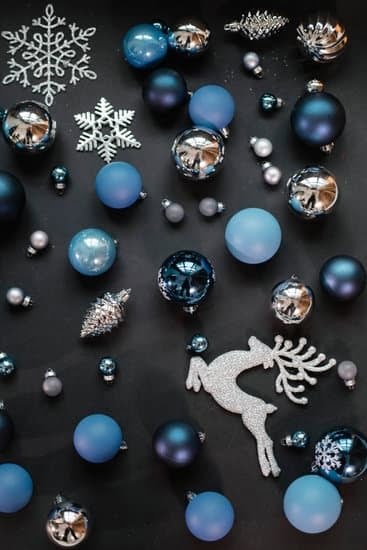Beaded jewelry is not only beautiful but also requires maintenance to ensure its longevity and luster. In this article, we will explore the essential steps for coating beaded jewelry to protect it from wear and tear. We will discuss different coating materials, the preparation process, application techniques, and tips for adding extra protection to your precious pieces.
Coating beaded jewelry is crucial in preserving its beauty and preventing damage. The right coating can provide a protective barrier against scratches, moisture, and tarnishing, ensuring that your jewelry maintains its shine and color over time. Additionally, a proper coating can enhance the durability of the beads and prevent them from chipping or breaking, ultimately extending the lifespan of your favorite pieces.
In the following sections, we will delve into the various aspects of coating beaded jewelry. From choosing the most suitable coating material to adding finishing touches and maintaining your coated pieces, this comprehensive guide will equip you with all the necessary information to effectively protect and care for your cherished beaded jewelry. Whether you are a beginner or an experienced crafter, this article will provide valuable insights on how to coat beaded jewelry for optimal preservation and enjoyment.
Choosing the Right Coating Material
When it comes to coating beaded jewelry, choosing the right coating material is crucial to ensure the longevity and durability of the pieces. There are several options available for coating materials, each with its own pros and cons. It’s important to consider factors such as the type of beads used, the desired finish, and the level of protection needed. Here are some popular options for coating materials:
- Resin: Resin is a popular choice for coating beaded jewelry because it provides a clear, glossy finish that enhances the appearance of the beads. It also offers excellent protection against wear and tear, making it ideal for everyday jewelry.
- Sealant: Sealants come in different forms, such as sprays or brush-on formulas, and provide a protective barrier against moisture, dirt, and tarnishing. They are versatile and can be used on various types of beads and jewelry pieces.
- Varnish: Varnish is another option for coating beaded jewelry and is available in different finishes, including matte, satin, or glossy. It provides a durable protective layer while allowing for customization in terms of the final look of the jewelry.
Each coating material has its own advantages and considerations. It’s important to take into account the specific needs of your beaded jewelry when selecting a coating material. Factors such as the type of beads (e.g. wood, glass, plastic), whether the jewelry will be worn frequently or occasionally, and the desired aesthetic should all be considered when making this decision.
Ultimately, choosing the right coating material will not only protect your beaded jewelry but also enhance its appearance and ensure its longevity. By understanding the pros and cons of each option, you can make an informed decision on which coating material is best suited for your specific needs.
Preparing the Beaded Jewelry
Before applying a coating to your beaded jewelry, it is essential to properly prepare the pieces to ensure that the coating adheres effectively and provides the desired protection. Cleaning and drying the beads thoroughly is crucial in this process. To start, gently wipe down each individual bead with a soft cloth or cotton pad to remove any dust, dirt, or oils from the surface. Be sure to pay close attention to any crevices or intricate designs in the beads.
For more stubborn residue, such as dried-on adhesive or grime, you may need to use a mild cleaning solution specifically designed for jewelry. Be cautious not to use harsh chemicals or abrasive materials that could damage the beads or their finish. If using a liquid cleaner, make sure to rinse off any residue thoroughly and pat the beads dry with a clean towel. Allow the beads to air dry completely before moving on to the next step.
Once your beaded jewelry is clean and dry, it is important to inspect each piece carefully for any signs of damage or imperfections that may affect the coating process. Look for chipped or cracked beads, loose threads, or broken clasps that may need repair before proceeding with coating. Making these repairs beforehand will prevent any issues with the durability of your coated jewelry later on.
Properly preparing your beaded jewelry for coating sets a strong foundation for achieving a professional-looking finish that enhances both the appearance and longevity of your pieces. Taking the time and care in this preparation phase will ensure that your coated jewelry maintains its quality and beauty over time without compromising its integrity.
Applying the Coating
Choosing the Right Coating Material
Before applying any coating to your beaded jewelry, it’s important to carefully consider the type of material you want to use. Some popular options for coating materials include resin, sealant, or varnish. Each of these materials has its own pros and cons, so it’s essential to weigh your options before making a decision.
Resin is a common choice for coating beaded jewelry due to its durability and high-gloss finish. However, it can be tricky to work with and requires careful application to avoid air bubbles or streaks. On the other hand, sealants are easier to apply and provide a more natural finish, but may not offer the same level of protection as resin. Varnish is another option that provides a clear protective layer, but it may not be as durable as resin.
Preparing the Beaded Jewelry
Before you can apply any coating material to your beaded jewelry, it’s crucial to properly prepare the pieces. Start by ensuring that the beads are clean and free from any dirt or debris. Use a mild soap and water solution to gently clean the surface of the beads, then allow them to dry completely before proceeding.
Once the beads are clean and dry, carefully inspect each piece for any imperfections or rough edges. Use fine-grit sandpaper or a nail buffer to smooth out any rough spots and ensure that the surface is even and smooth. This step is essential for achieving a professional-looking finish once the coating is applied.
Applying the Coating
When applying the chosen coating material to your beaded jewelry, it’s important to work in a well-ventilated area with plenty of natural light. Follow the manufacturer’s instructions for mixing and preparing the coating material, then use a small brush or applicator tool to carefully apply an even layer of coating onto the beads.
To achieve a smooth and even finish, take your time and work methodically across each bead, ensuring that no areas are missed or overlapped excessively. If using resin, pay close attention to avoiding air bubbles by slowly pouring and spreading the resin over each bead. Take care not to apply too much pressure while working with delicate beads in order to avoid damage.
By following these detailed instructions on how to apply your chosen coating material
Curing the Coating
Understanding the Curing Process
When it comes to coating beaded jewelry, understanding the curing process is crucial. Different coating materials, such as resin, sealant, or varnish, require specific curing methods to ensure that the jewelry is properly coated and protected. Resin, for example, typically requires a curing time ranging from 24 to 72 hours, while sealants and varnishes may have different curing times. It’s important to follow the manufacturer’s instructions for each type of coating material to achieve optimal results.
Ensuring Proper Curing
To ensure that the jewelry is properly cured, it’s essential to follow some key steps. First, make sure that the coated jewelry pieces are placed in a clean and dust-free environment during the curing process. This will prevent any particles from adhering to the wet coating and affecting its finish. Additionally, maintaining a consistent temperature and humidity level in the curing area can help expedite and improve the curing process.
Testing for Curing Completion
After allowing the coated jewelry pieces to cure for the recommended time period, it’s important to test for completion. This can be done by lightly touching an inconspicuous area of the jewelry with a fingertip – if there is no sticky or tacky feeling, then the coating has likely cured properly.
If using resin as a coating material, another method to test for complete curing is by gently pressing your fingernail into an inconspicuous area – if there are no visible marks or imprints left behind, then your resin has fully cured.
By understanding the specific requirements of each coating material’s curing process and diligently following these steps, you can ensure that your beaded jewelry is properly cured and ready for long-lasting wear.
Adding Additional Protection
Once you have successfully coated your beaded jewelry, it is essential to consider adding extra protection to ensure its longevity and durability. There are several options for adding this additional layer of defense, such as applying a top coat or using a jewelry protectant spray. These methods can help protect the coating from scratches, tarnishing, and other forms of damage.
One option for adding extra protection to coated beaded jewelry is to apply a top coat. This involves using a specialized clear coating that is designed to provide an additional barrier against wear and tear. When choosing a top coat, look for one that is compatible with the material used for the initial coating, whether it is resin, sealant, or varnish. This will help ensure that the top coat adheres properly and provides effective protection.
Another method for safeguarding your coated beaded jewelry is to use a jewelry protectant spray. These sprays are formulated specifically to provide a transparent protective layer over jewelry pieces, including those with delicate beadwork. When using a jewelry protectant spray, it is important to follow the manufacturer’s instructions carefully to achieve an even application and thorough coverage.
In addition to enhancing the protective qualities of the coated beaded jewelry, both top coats and jewelry protectant sprays can also contribute to maintaining the overall luster and appearance of the pieces. By following these tips for adding extra protection, you can help ensure that your coated beaded jewelry remains beautiful and resilient over time.
| Protection Method | Description |
|---|---|
| Top Coat | A specialized clear coating that provides an additional barrier against wear and tear. |
| Jewelry Protectant Spray | A transparent protective layer formulated specifically for jewelry pieces. |
Finishing Touches
Adding finishing touches to coated beaded jewelry is an essential step to ensure the overall quality and durability of the pieces. Here’s a step-by-step guide on how to add finishing touches to your coated beaded jewelry, such as attaching clasps or jump rings:
- Attach Clasps: Once the coating material has been applied and cured, it’s time to attach the clasps to your beaded jewelry. Use a pair of jewelry pliers to carefully open the jump ring, slide it onto the end of the piece, and then close it securely. This will allow you to easily fasten and unfasten your jewelry.
- Add Jump Rings: In some cases, you may want to add jump rings to your coated beaded jewelry for added length or style. Similar to attaching clasps, use your jewelry pliers to open the jump ring, slide it onto the desired location on your piece, and then close it securely.
It is important to note that when adding these finishing touches, you should handle the coated beaded jewelry with care to avoid any damage or scratches. Take your time and work in a well-lit area for better visibility.
In addition, always ensure that the clasps and jump rings are securely attached before wearing the coated beaded jewelry. Inspect each attachment closely and make any necessary adjustments before proudly showcasing your beautifully finished pieces.
By following these guidelines for adding finishing touches to your coated beaded jewelry, you can effectively complete each piece with professional-looking details that enhance their overall appeal and wearability.
Care and Maintenance
In conclusion, coating beaded jewelry is an essential step in ensuring its longevity and luster. By applying a protective coating, such as resin, sealant, or varnish, you can effectively safeguard your beaded pieces from everyday wear and tear, as well as the tarnishing effects of exposure to air and moisture. Not only does coating provide a protective barrier, but it also enhances the overall appearance of the jewelry, giving it a polished and professional finish.
When choosing the right coating material for your beaded jewelry, it’s important to consider the specific needs of your pieces and their intended use. Whether you opt for resin for its durable and glossy finish, sealant for its ease of application and versatility, or varnish for its traditional luster, each option has its own benefits.
Take into account factors such as the type of beads used, the desired level of protection, and whether the jewelry will be subject to frequent contact or exposure.
Once you have successfully coated your beaded jewelry, it’s crucial to understand how to care for and maintain it in order to preserve its beauty over time.
By following proper maintenance practices such as gentle cleaning with mild soap and water, avoiding direct contact with harsh chemicals or solvents, and storing the jewelry in a dry and secure place when not in use, you can ensure that your coated beaded pieces retain their shine and appeal for years to come.
With these tips in mind, you can confidently create and wear coated beaded jewelry that remains stunning and well-protected.
Frequently Asked Questions
How Do You End Beaded Jewelry?
To end beaded jewelry, you can use a variety of techniques such as crimping beads, using wire guardians, or making knots. Crimp beads are commonly used to secure the ends of beaded jewelry, while wire guardians provide added protection to the wire.
How Do You Seal Beadwork?
Sealing beadwork is important to protect the threads and prevent the beads from coming loose. You can use clear nail polish or special fabric sealants to coat the knots and threads in your beadwork. This helps to secure everything in place and prevents fraying.
How Do You Stiffen Beaded Jewelry?
Stiffening beaded jewelry can be done by using products like fabric stiffener or clear-drying glues. You can apply these products carefully to specific areas of the beadwork to achieve the desired stiffness without affecting the overall look and feel of the piece.

Welcome to my jewelry blog! My name is Sarah and I am the owner of this blog.
I love making jewelry and sharing my creations with others.
So whether you’re someone who loves wearing jewelry yourself or simply enjoys learning about it, be sure to check out my blog for insightful posts on everything related to this exciting topic!





